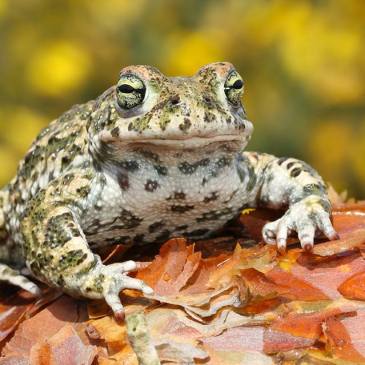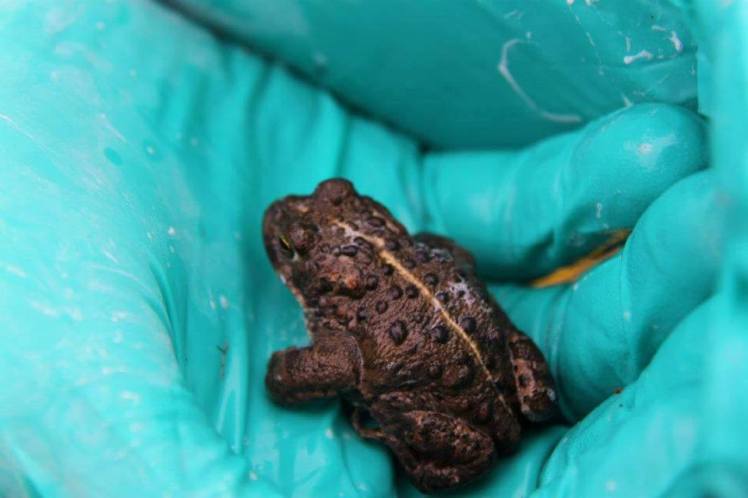
The natterjack toad (Epidalea clamita) is Ireland’s rarest amphibian, and the most endangered of our native amphibian species. Habitat destruction has been the most significant factor driving declines in this species’ numbers, however, recent conservation efforts by the National Parks and Wildlife Service (NPWS) have yielded some encouraging results. This species’ natural distribution in Ireland is restricted to a handful of coastal habitats in Kerry, though there are a few populations elsewhere in the country as a result of deliberate introductions.
The conservation scheme undertaken by NPWS involves compensating farmers for creating and maintaining suitable breeding habitats on their land. The scheme has had a significant uptake, and many of the newly created habitats have been utilised by the toad.
As many people are unfamiliar with this species, it can sometimes be confused with the common frog (Rana temporaria) though there are some obvious physical differences which can be used to differentiate between the two. The natterjack toad has much shorter legs than the common frog, which gives it a unique gait and prevents it from hopping in the same way as the frog. However, the most prominent identifying feature is the yellow line that runs along the length of the toad’s back; a feature that is not found in the common frog.

The natterjack toad has very specific habitat requirements for breeding. They require a shallow water-body, with a gentle slope, and minimal aquatic and border vegetation. The breeding season typically occurs between April and July, during which time, males will call out to attract females. Unlike the common frog, which breeds explosively over a short period, natterjack toads tend to stagger their breeding efforts, with some individuals breeding early in the season while others breed later. Spawn is laid in strings rather than clumps.
Video Credit: Viridiflavus (Own work) [CC BY-SA 3.0 (http://creativecommons.org/licenses/by-sa/3.0)%5D, via Wikimedia Commons
Featured Image Credit: Jason Steel
